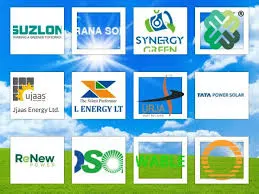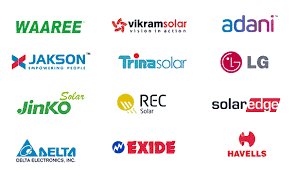Explore how top solar companies in 2025 are leading the global shift to renewable energy. Learn about innovations, market trends, and sustainability efforts.
Solar Companies Powering a Greener Future in 2025
As the world races toward sustainable energy solutions, solar companies are emerging as key players in reshaping the future of global power. In 2025, advancements in solar technology, cost reductions, and increased environmental awareness are driving significant growth in the industry.
Innovation at the Core of Growth
The solar industry is evolving at an unprecedented pace. Companies like First Solar, SunPower, and LONGi Green Energy are leading the way with cutting-edge technologies that improve efficiency and reduce production costs.
First Solar, a U.S.-based company, has pioneered thin-film solar panels that perform better in high temperatures, making them ideal for desert regions and emerging markets. Meanwhile, Chinese manufacturer LONGi continues to dominate global markets with high-efficiency monocrystalline panels. Their new bifacial panels, which generate power from both sides, are gaining popularity in large-scale utility projects.
SunPower, known for its sleek residential panels, has recently introduced energy storage and management systems that allow homeowners to monitor and control their solar energy use in real-time.

Expansion into New Markets
One of the biggest trends in 2025 is the expansion of solar companies into new and underserved markets. Africa, Southeast Asia, and Latin America are witnessing increased investments in solar infrastructure. These regions offer vast potential for solar due to abundant sunlight and rising electricity demands.
Solar mini-grids and off-grid solutions are being deployed to provide clean energy to remote communities. Companies like d.light and BBOXX are focusing on these areas, delivering solar kits that include lighting, phone charging, and even small appliances.
Sustainability and Environmental Goals
Solar companies are not only focusing on profit but also sustainability. Many are aligning their operations with global environmental goals such as the UN Sustainable Development Goals (SDGs) and net-zero emission targets.
Canadian Solar and Trina Solar have made strong commitments to reduce their carbon footprint by transitioning their manufacturing plants to run on renewable energy. Moreover, recycling initiatives are being implemented to manage end-of-life solar panels responsibly.
Challenges and Opportunities
Despite its rapid growth, the solar industry still faces challenges. Supply chain disruptions, especially concerning polysilicon (a key component in panels), and trade restrictions between major economies like the U.S. and China have caused fluctuations in pricing and availability.
However, these challenges have also created opportunities for innovation. Several companies are investing in localized manufacturing to reduce dependency on imports and improve resilience.
Government incentives, favorable policies, and increasing public demand for clean energy continue to support the sector’s growth. In the U.S., the Inflation Reduction Act has extended tax credits for solar projects, fueling both residential and commercial installations.

The Future Is Bright
Looking ahead, the role of artificial intelligence, data analytics, and smart grid technology will become more prominent. These tools will help optimize solar energy generation, storage, and usage, offering more value to consumers and businesses alike.
With billions in global investment and growing public awareness, solar companies are poised to redefine how the world generates and consumes energy. From powering homes and businesses to electrifying remote villages, the impact of solar energy in 2025 is more transformative than ever before.





